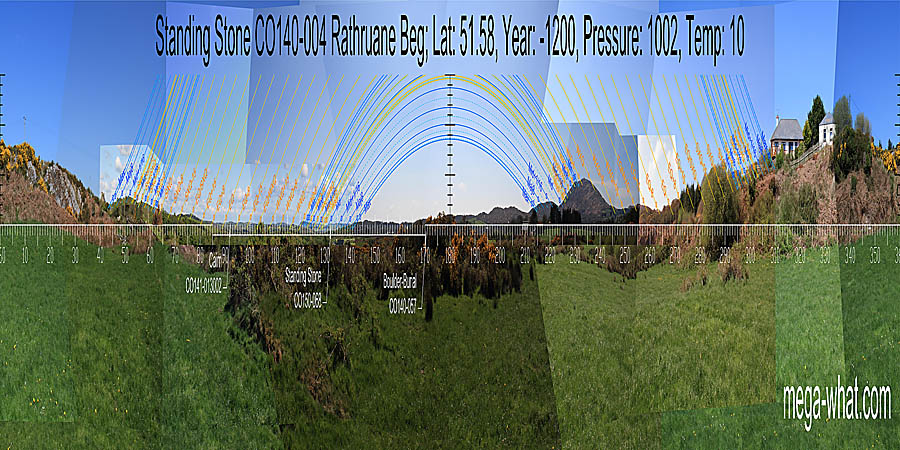 Rathruane Beg Standing Stone is about 2.5km north-west of Ballydehob. Its long axis is roughly North-south.
Rathruane Beg Standing Stone is about 2.5km north-west of Ballydehob. Its long axis is roughly North-south.
South is at the end of a section of ridge [Pic].
North is just to the right of the highest point of the local ridge [Pic].
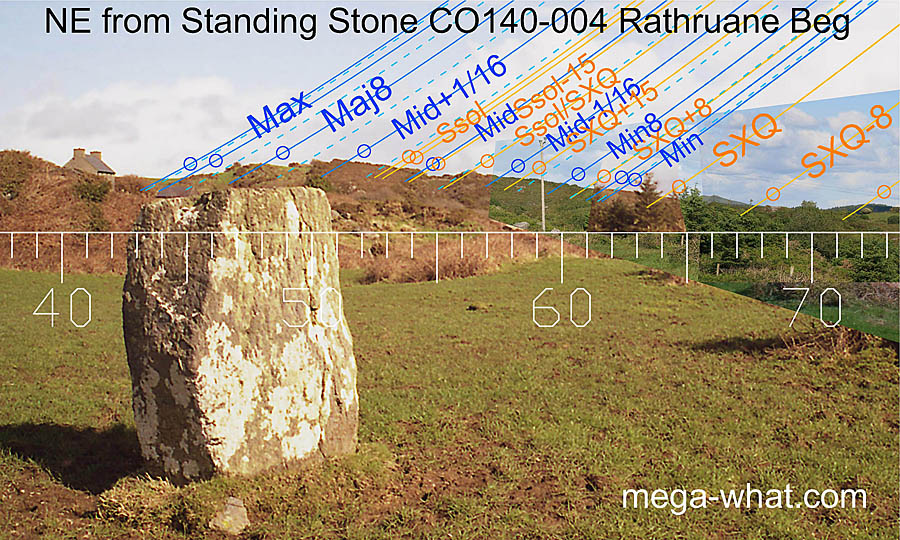 This Standing Stone is 800m NNW of Boulder-Burial CO140-057.
The two sites are intervisible (if vegetation allows) and there are no other sites in the area.
It thus seems likely that the Standing Stone was an alternative observing position for the boulder-burial people.
This Standing Stone is 800m NNW of Boulder-Burial CO140-057.
The two sites are intervisible (if vegetation allows) and there are no other sites in the area.
It thus seems likely that the Standing Stone was an alternative observing position for the boulder-burial people.
The north-eastern horizon is the second nearest and the position of the major standstillLunistice positions vary cyclically over an 18.6 year period but are fairly static for more than a year at either end of the range in the bottom of the dip makes it clear that use of this horizon sector to measure the lunisticeLunistices are the most northerly and southerly moons of the month. The lunar equivalent of solstices - more. range would have been a major determining factor in the exact location of the Standing Stone.
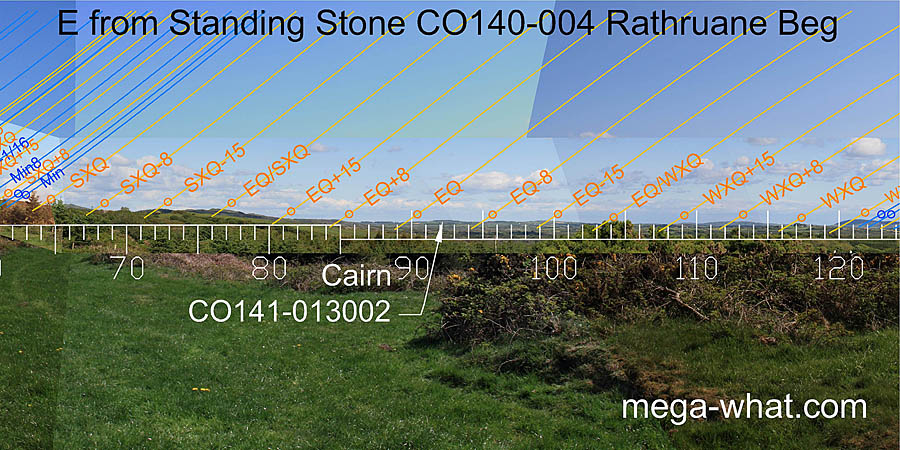 Being in a more elevated position than the Boulder-Burial it commands a better view of the distant eastern horizon.
On that eastern horizon Cairn CO141-013002 is a couple of days south of the equinox.
Being in a more elevated position than the Boulder-Burial it commands a better view of the distant eastern horizon.
On that eastern horizon Cairn CO141-013002 is a couple of days south of the equinox.
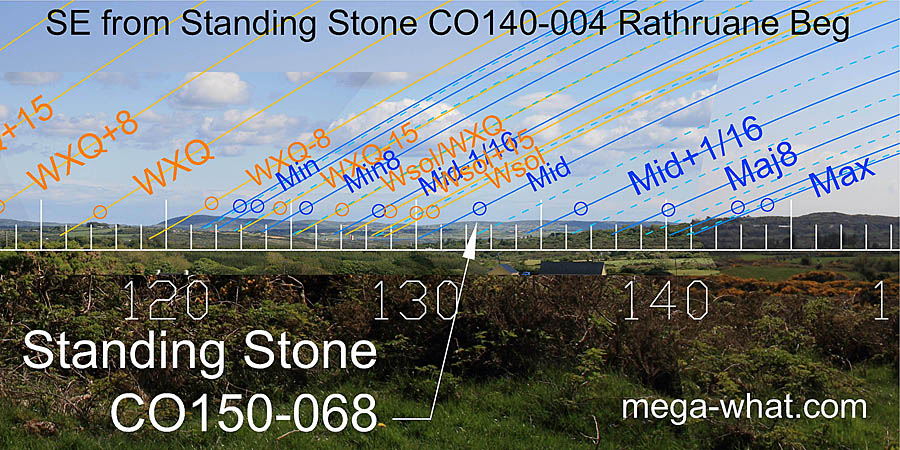 To the south-east, this piece of distant horizon and its intersection with nearer ground have obviously been selected to mark out both the
lunisticeLunistices are the most northerly and southerly moons of the month. The lunar equivalent of solstices - more.
range and the winter part of the year.
Standing Stone CO150-068 is on this skyline but too distant to be significant from here.
To the south-east, this piece of distant horizon and its intersection with nearer ground have obviously been selected to mark out both the
lunisticeLunistices are the most northerly and southerly moons of the month. The lunar equivalent of solstices - more.
range and the winter part of the year.
Standing Stone CO150-068 is on this skyline but too distant to be significant from here.
The quarter-month south of the winter cross-quarters are on the top of Knockomagh. Commonly used as a terminator for the lunar sequence it is just a little north of the minor standstillLunistice positions vary cyclically over an 18.6 year period but are fairly static for more than a year at either end of the range. The winter solstice is in a dip and the major end of the lunisticeLunistices are the most northerly and southerly moons of the month. The lunar equivalent of solstices - more. range is on the first part of a nearer ridge.
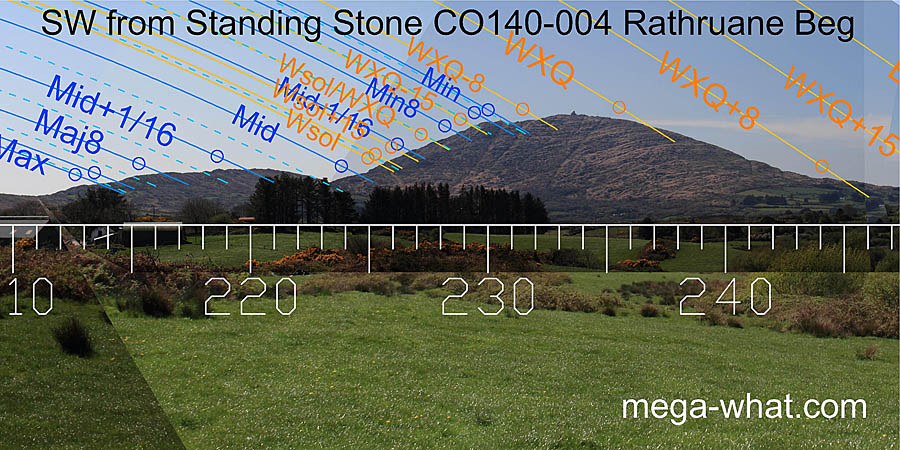 The south-west has again been optimised for lunar measurement with the minor end of the lunisticeLunistices are the most northerly and southerly moons of the month. The lunar equivalent of solstices - more.
range at the top of Mt Gabriel's south slope.
The south-west has again been optimised for lunar measurement with the minor end of the lunisticeLunistices are the most northerly and southerly moons of the month. The lunar equivalent of solstices - more.
range at the top of Mt Gabriel's south slope.
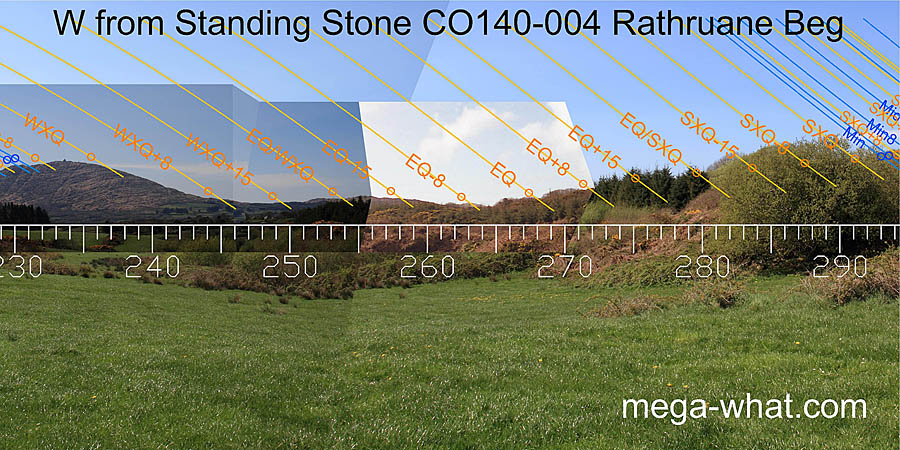 There is a useful flow to the markers of the western horizon but nearer forestry soon obscures it.
There is a useful flow to the markers of the western horizon but nearer forestry soon obscures it.
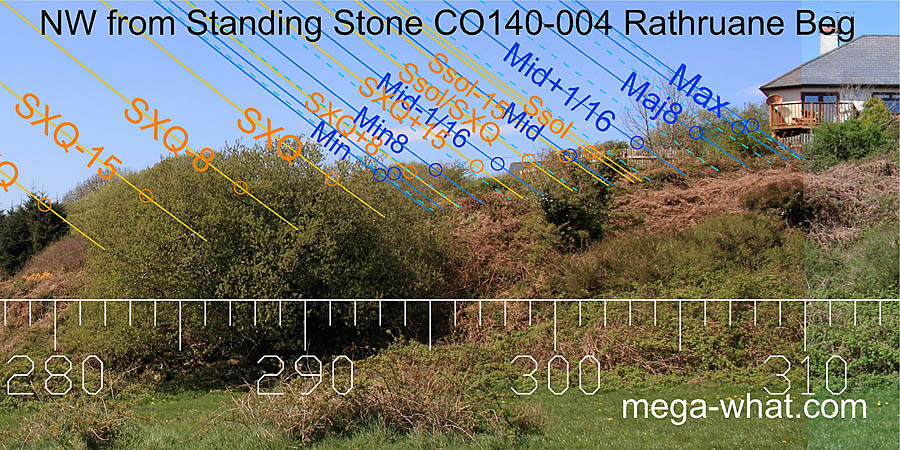 The north-west horizon is very close but currently obscured by vegetation. Originally it would have been easily manipulable.
Its exact configuration and its intersection with the further western ridge could have been significant micro-position deciding factors.
The north-west horizon is very close but currently obscured by vegetation. Originally it would have been easily manipulable.
Its exact configuration and its intersection with the further western ridge could have been significant micro-position deciding factors.
References
- Archaeological Survey of Ireland, record details. www.archaeology.ie/archaeological-survey-ireland
- POWER, D. et al. 1992 Archaeological Inventory of County Cork, Volume 1: West Cork. Dublin: Stationary Office. p64, no.467.
